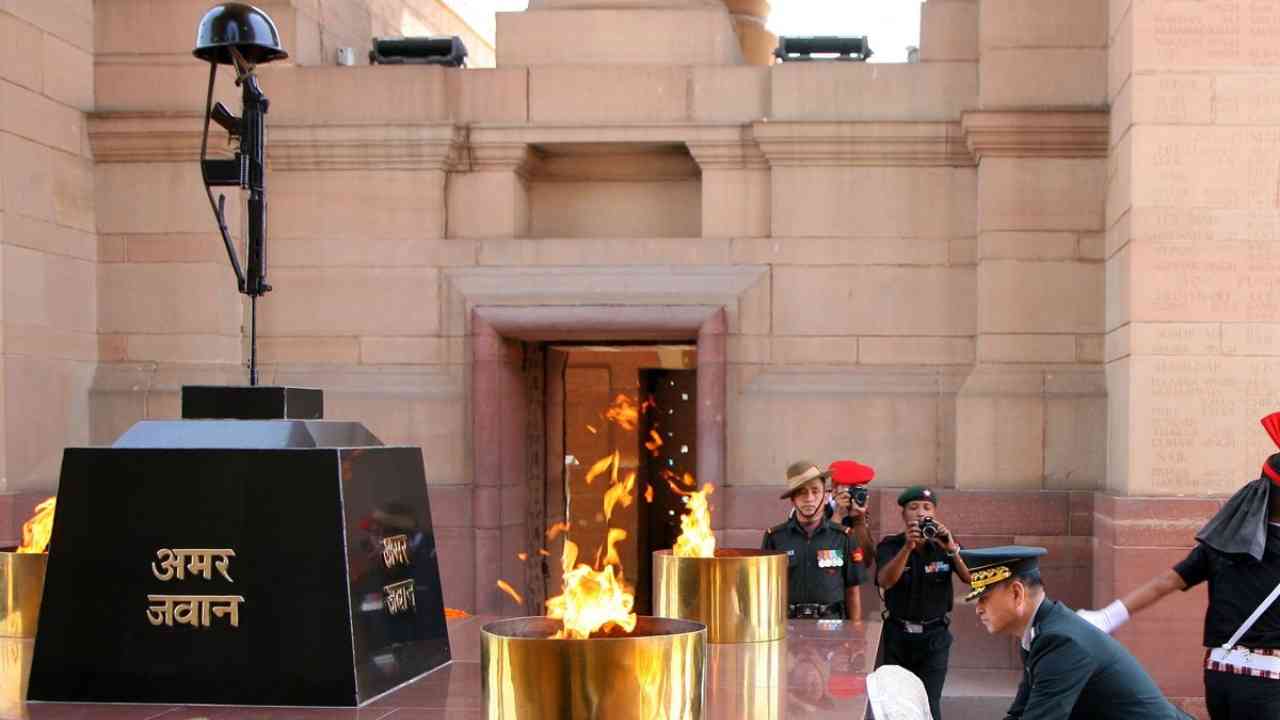INTRODUCTION
India Gate, standing majestically in the heart of New Delhi, is not just a monument; but a symbol of India’s rich history, its struggles, and the ultimate sacrifices made by its soldiers. Designed by the renowned British architect Sir Edwin Lutyens, India Gate was built as a war memorial to honor the Indian soldiers who lost their lives during World War I and the Third Anglo-Afghan War. Over the years, this monument has become one of the most iconic landmarks in India. Millions visit it every year and admire its architectural grandeur and historical significance.
The Historical Context and Construction

Pic Credits:- Google.com
The foundation stone of India Gate was laid in 1921, and the monument was inaugurated ten years later, in 1931, by Lord Irwin, the then Viceroy of India. Originally known as the All India War Memorial, it was built to commemorate the 82,000 Indian soldiers who fought and died for the British Empire during World War I and the Third Anglo-Afghan War. The names of over 13,000 soldiers are inscribed on the walls of the monument, serving as a poignant reminder of their sacrifices.
Standing 42 meters tall, India Gate is an exemplary piece of architecture that combines classical and modern styles. The structure is made of red and pale sandstone, and its design was inspired by the Arc de Triomphe in Paris. The monument is flanked by lush green lawns, making it a popular spot for picnics, evening strolls, and gatherings, especially in the cooler months.
Amar Jawan Jyoti: The Flame of the Immortal Soldier

Pic Credits:- Google.com
Beneath the arch of India Gate lies the Amar Jawan Jyoti, or the Flame of the Immortal Soldier. This eternal flame was added to the monument after India gained independence, to honor the soldiers who died in the Indo-Pakistani War of 1971. The flame burns day and night, symbolizing the nation’s gratitude and respect for its fallen heroes. The structure consists of a marble pedestal with a rifle topped by a soldier’s helmet, surrounded by four eternal flames, one on each side.
Every Republic Day, on January 26th, the Prime Minister of India visits the Amar Jawan Jyoti to pay tribute to the soldiers, marking the beginning of the Republic Day celebrations. This solemn ceremony is attended by top military officials and dignitaries, making it a deeply significant event in the nation’s calendar.
India Gate as a Cultural Icon

Pic Credits:- Google.com
Beyond its historical importance, India Gate has also become a cultural icon. It is a place where people from all walks of life come together, reflecting the diverse fabric of Indian society. The monument, bathed in lights in the evening, creates a picturesque view that attracts photographers, tourists, and locals alike. The surrounding area, known as Rajpath, is often bustling with activity, especially during the Republic Day parade when the road is lined with people cheering the grand display of India’s military might and cultural diversity.
The India Gate lawns are also a popular spot for families, especially in the summer evenings when the heat of the day subsides. Street vendors selling ice cream, chaat, and other local delicacies add to the lively atmosphere. The monument has thus transcended its original purpose as a war memorial and has become a gathering place for people, a symbol of the vibrant life of the capital city.
India Gate in Contemporary Times
In recent years, India Gate has also been the site of several peaceful protests and candlelight vigils, highlighting its role as a symbol of democracy and freedom in modern India. These events underscore the monument’s continuing relevance in contemporary Indian society, where it stands not just as a memorial to the past, but as a beacon of the enduring spirit of the nation.
In conclusion, India Gate is more than just a monument. It is a symbol of India’s history, its sacrifices, and its unity. It stands as a proud reminder of the bravery and valor of the Indian soldiers, while also serving as a space for celebration, reflection, and gathering. Whether you are a history enthusiast, a tourist, or a local resident, a visit to India Gate is an experience that resonates with the heart and soul of India.